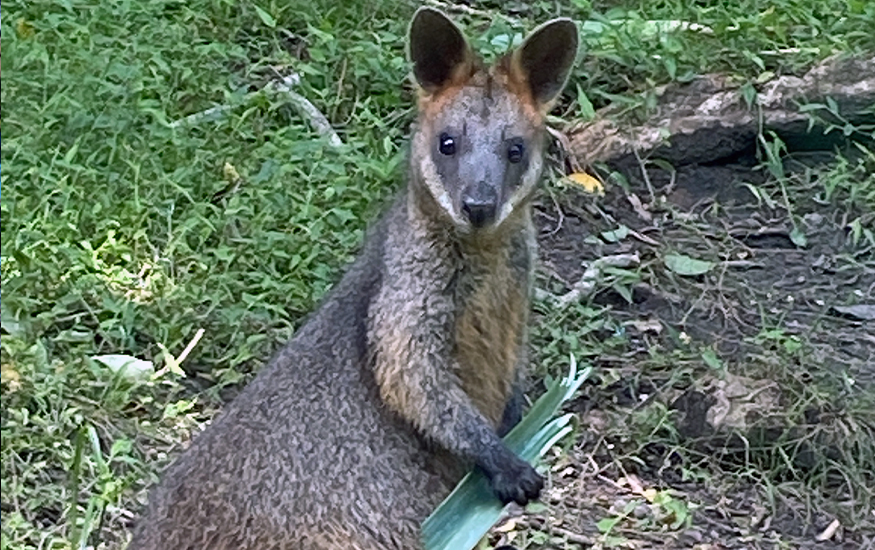We don’t always see them but we can usually see where they’ve been by their spoor and the trail of chewed leaves and branches. We’re talking about our regular neighbourhood visitors – wallabies.
Terry Longhurst, our resident biologist, has been talking with NPWS Ranger Luke McSweeney and has some general information on how these familiar, furry marsupials are faring.
Fortunately our wallabies aren’t a threatened species but this means that their numbers aren’t officially surveyed however, judging from the past 3 years of good seasons, we can assume their population is up. The increase is also due to the fact that there are no wild dogs in our National Park and there have been no recent reports of domestic dog attacks on wallabies.
Some dead wallabies have been found with injuries to the face, but Park Ranger Luke McSweeney believes this is most likely due to carcass attack by goannas. Injuries have also been found to the chest cavity, but these are possibly caused by foxes and the control of foxes in the Park is ongoing.
There is some cause for concern at the occurrence of Swamp Wallaby Ear Disease which can lead to the death of a wallaby due to an inability to forage. The Australian Registry of Wildlife Health at Taronga Zoo is working on determining the exact cause of the syndrome. More information can be found here.
If residents do see a wallaby with characteristics of the syndrome, please contact:
- The Australian Registry of Wildlife Health on 02 9978 4749 or 02 9978 4788
- or the local NPWS office on 02 9451 3479.
